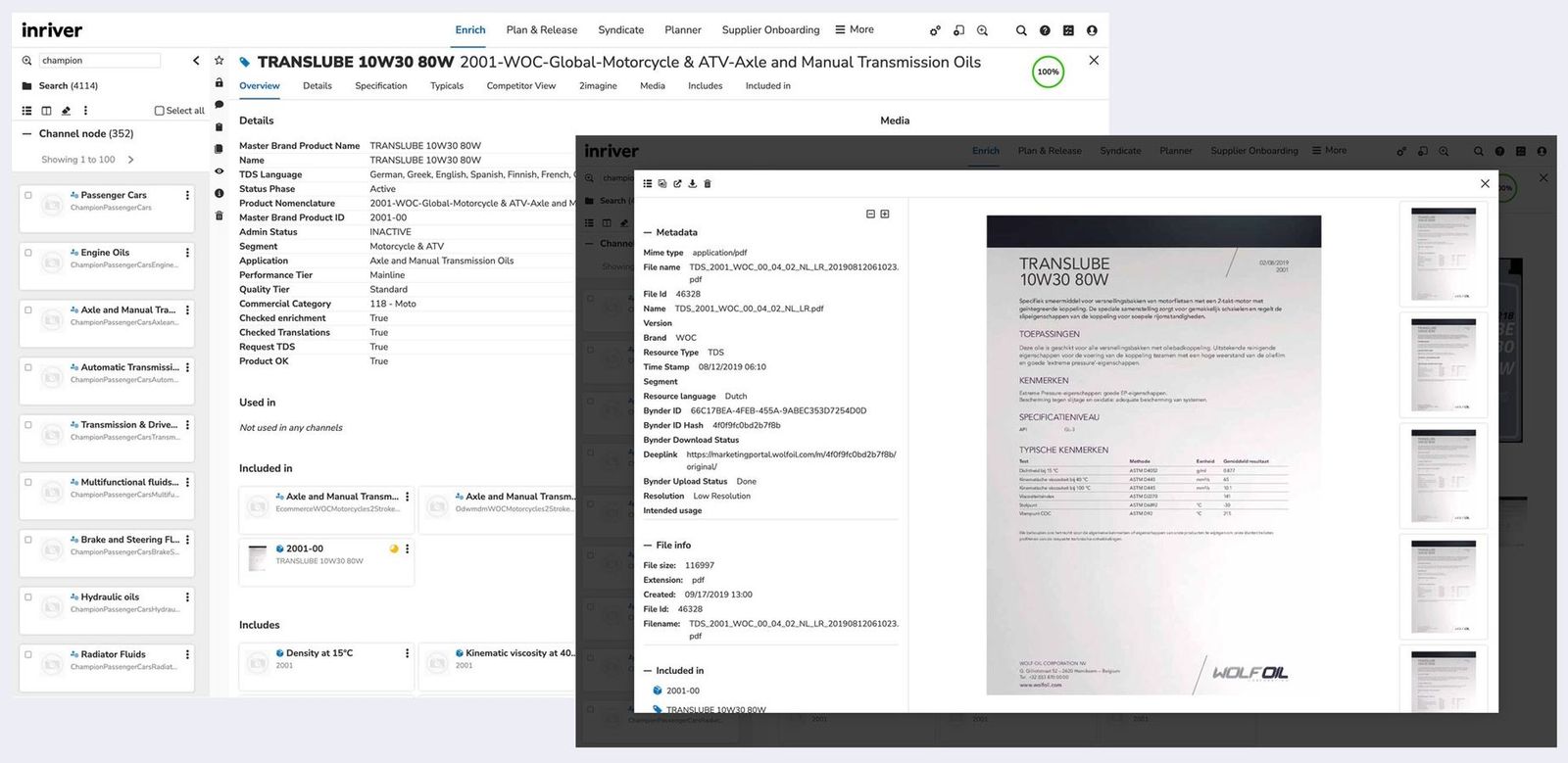PIM, the central place for your multilingual product data
PIM stands for Product Information Management, defining the process of managing all the information necessary to market products through the various distribution channels. In practice, it is a centralized repository where all the essential information on each product can be found: identification code, name, description, measurements, weight, variants (such as colors, sizes, models, etc.), photos, videos, reviews, related products - in various languages. The PIM centralizes the complete product catalog of a company or economic group, whether it is a manufacturer, wholesaler, or retailer.
The need for product sheets
A datasheet is (usually) a one-sheet document composed of fundamental details of a component, material, product, service, or system such as its main characteristics, performance, and many others. Datasheets, also known as specification sheets or sell sheets, are crucial documentation tools for many people, businesses, and organizations as they are extensively used for specifying primary aspects of an item or service to guide people in selecting the right items or in utilizing the items properly. It provides product images, logos, product benefits, leaflets, and instructional guidelines available in PDF, Adobe InDesign, Photoshop, Illustrator, and other digital formats.
How PIM systems produce datasheets
PIM systems offer various ways to generate product datasheets. These solutions can be rather diverse. Most common are options for exporting the product data as an excel file, and sending it to a graphic designer to create the datasheet on his desktop. In the best case, the designer uses a database plugin for Adobe InDesign, like Easycatalog, to avoid copying and pasting the data in his document.
Other PIM systems offer a more integrated solution or module in the form of templates. These templates are developed in HTML by technical development teams. A few PIM systems have an infrastructure for templates created in Adobe InDesign, the default program in graphic design for print output.
HTML versus Adobe InDesign templates
HTML templates seem a logical solution for producing product sheets on the fly when they are requested by customers visiting the website. The information on the product data sheet is always up-to-date as it comes directly from the data stored in the PIM system. However, in practice, the setup is rather complex. HTML templates need to be created by development teams, limiting the flexibility to alter the layout when marketing requests. HTML is not an ideal solution when the data sheets need to be used for professional printing. Multipage datasheets are difficult to create in HTML. Popular websites need an advanced configuration with caching mechanisms to offer a reasonable response time from the PIM system.
Templates created in Adobe InDesign are a preferred solution for creating print output. It is the default application in the graphic industry. Documents can be exported to various PDF and HTML formats with the corresponding quality resolution. The plugin Easycatalog assists in automating document production with the product data from the PIM system. Easycatalog pulls the live data from PIM and places it as variables in the InDesign document. The bottleneck for creating the datasheets is human-related: each datasheet needs to be processed by an operator, a graphic designer using Adobe InDesign on his desktop. When talking about 1000 products and 10 languages, this task becomes impossible to manage manually!
2imagine Pulse automation
When retail customers search for a way to produce thousands of datasheets, solutions for creative automation are implemented, such as 2imagine Pulse.2imagine Pulse is a cloud service to generate documents, based on Adobe InDesign templates, in a 100% automated way, triggered from the PIM system. Each time a marketer or product responsible changes product data in PIM, an action triggers the creation of the datasheet, export it to PDF, and publish it on the website. No need for manual work by the designer in Adobe InDesign to produce print-ready PDF.
Pulse is a cloud service managed by 2imagine. It is a flexible and scalable solution. Adobe InDesign templates are created by graphic designers, at the customer or their agencies, containing variable Easycatalog fields for the PIM product data. Pulse is integrated in PIM using webhooks, API, or hot folders can be used.





